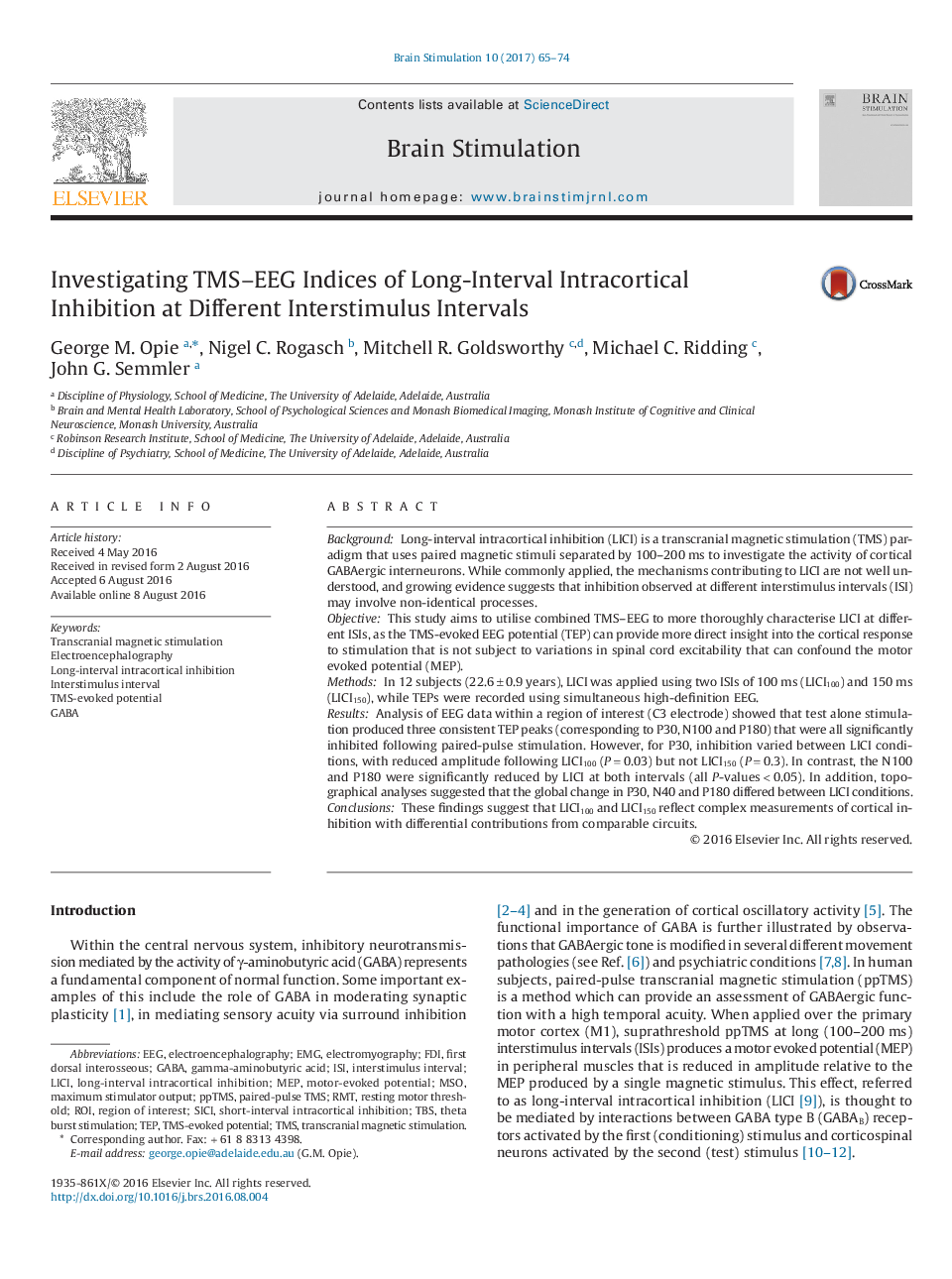| کد مقاله | کد نشریه | سال انتشار | مقاله انگلیسی | نسخه تمام متن |
|---|---|---|---|---|
| 5626599 | 1406325 | 2017 | 10 صفحه PDF | دانلود رایگان |

- TMS-evoked potentials were reduced following LICI with interstimulus intervals (ISIs) of 100âms and 150âms.
- Inhibition of P30 was observed following LICI at 100âms, but was absent following LICI at 150âms.
- Topographical analyses suggested that global inhibition of P30, N40 and P180, but not N100, differed between ISIs.
- Our findings suggest that LICI at different ISIs likely has complex contributions from common mechanisms.
BackgroundLong-interval intracortical inhibition (LICI) is a transcranial magnetic stimulation (TMS) paradigm that uses paired magnetic stimuli separated by 100-200âms to investigate the activity of cortical GABAergic interneurons. While commonly applied, the mechanisms contributing to LICI are not well understood, and growing evidence suggests that inhibition observed at different interstimulus intervals (ISI) may involve non-identical processes.ObjectiveThis study aims to utilise combined TMS-EEG to more thoroughly characterise LICI at different ISIs, as the TMS-evoked EEG potential (TEP) can provide more direct insight into the cortical response to stimulation that is not subject to variations in spinal cord excitability that can confound the motor evoked potential (MEP).MethodsIn 12 subjects (22.6â±â0.9 years), LICI was applied using two ISIs of 100âms (LICI100) and 150âms (LICI150), while TEPs were recorded using simultaneous high-definition EEG.ResultsAnalysis of EEG data within a region of interest (C3 electrode) showed that test alone stimulation produced three consistent TEP peaks (corresponding to P30, N100 and P180) that were all significantly inhibited following paired-pulse stimulation. However, for P30, inhibition varied between LICI conditions, with reduced amplitude following LICI100 (Pâ=â0.03) but not LICI150 (Pâ=â0.3). In contrast, the N100 and P180 were significantly reduced by LICI at both intervals (all P-valuesâ<â0.05). In addition, topographical analyses suggested that the global change in P30, N40 and P180 differed between LICI conditions.ConclusionsThese findings suggest that LICI100 and LICI150 reflect complex measurements of cortical inhibition with differential contributions from comparable circuits.
Journal: Brain Stimulation - Volume 10, Issue 1, JanuaryâFebruary 2017, Pages 65-74